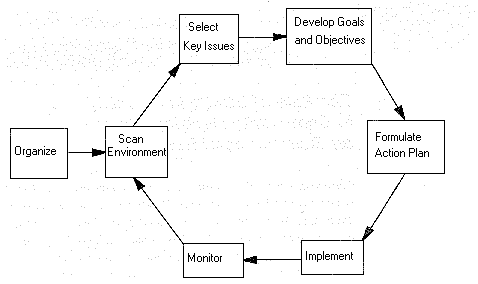

Communities throughout North Carolina currently face a number of critical issues related to the use and protection of natural resources. These range from siting and construction of new solid waste management facilities to the enactment of land use ordinances aimed at groundwater protection. In many instances, decisions have to be made because of state or federal regulations requiring local governments to take actions to protect the quality of the natural resource base; in other cases, expanding environmental consciousness is causing citizens and local government officials to take steps to improve or protect the quality of water, air, and land resources.
The process whereby environmentally related decisions are made can be a contentious and divisive one. Often, actions that protect scarce natural resources have effects that are perceived by some segments of the community to have negative economic repercussions. A case in point is new watershed management rules promoted as a part of the Water Supply Watershed Protection Act (HB156). These rules limit the extent and type of development allowable on certain critical areas adjacent to water supply sources, and hence are expected to affect some landowners and developers in negative ways.
Strategic planning is a mechanism through which the residents of a community can be brought together in an attempt to reconcile a variety of viewpoints regarding environmental decision-making. It is distinguished from other methods of public decision making in two key ways.
First, instead of concentrating the responsibility for formulating and implementing policies in the hands of a few persons, strategic planning stresses the need to bring citizens from as wide a cross-section of the community as possible into the policy-making process.
Second, it is an on-going process that stresses the importance of continually monitoring the progress toward agreed-upon goals and objectives.
In this factsheet we will describe the strategic planning process and its potential role in community decision-making on environmental issues.

Figure 2. Steps in the Strategic Planning Process.
The next step of the strategic planning process is to assemble the relevant information necessary for participants to make sound decisions. This phase, commonly referred to as an environmental scan, provides the necessary intelligence on the community's internal resources for attacking problems as well as the external economic and policy environment within which the community exists.
The next phase of the strategic planning process is to select a limited set of issues on which to concentrate. This can be accomplished by establishing task forces to hold organized, structured discussions around central themes e.g., technical environmental considerations, public finance issues, and economic impacts.
Once a set of issues have been identified, study teams examine each issue. Composed of a range of citizens from the community, each team conducts its own analysis before recommending desired outcomes or actions (goals) and measures of those outcomes (objectives) to the planning committee. Once goals and objectives have been formed, strategies in the form of action plans must be developed for carrying them out. An action plan lists the specific steps to be taken, assigns responsibility to specific individuals or groups for carrying out those steps, and assures that tasks are completed according to a detailed timetable that can be evaluated along the way. A well-designed action plan aids the implementation process by ensuring complete understanding of the various tasks and the time required to perform them. Consequently, implementation should follow the action plan closely.
To be successful, strategic planning requires continuous monitoring. Regular progress updates provide an early warning system that will alert the planning committee when actions are not proceeding according to plan. Monitoring should also track expenditures and allocation of resources. Finally, continual monitoring will supply local government sponsors of the strategic planning process with the information necessary to assess the progress toward meeting the goals and objectives adopted by the community.
With the assistance of the NC Cooperative Extension Service, the QNRC evaluated surface water, groundwater and air quality in the county. The assessment provided county leaders with a current picture of air and water quality in the county. The QNRC also commissioned a county-wide community survey to learn about the concerns of county residents toward environmental quality and their willingness to clean up the environment.
Based on the information they gained from the environmental assessment and community survey, the QNRC then began the process of exploring policy alternatives for improving air and water quality. Dividing into three resource committees: air, surface water, and groundwater, the members worked through the structured process described earlier in this bulletin to develop policy recommendations. The policy process consisted of seven steps (Figure 3). These were:
Figure 3. Using the public policy process to develop and implement action
plans.
The QNRC has used this process for several policy issues including watershed protection, industrial wastewater discharge, and air pollution. The process is ongoing. The QNRC continues to monitor its air and water quality and is currently updating the county environmental assessment.
AREP94-4-April 1994
bridgesj@unity.ncsu.edu
04/16/96
 Back up one Back up one
| Return to WQWM Home Page |
|---|